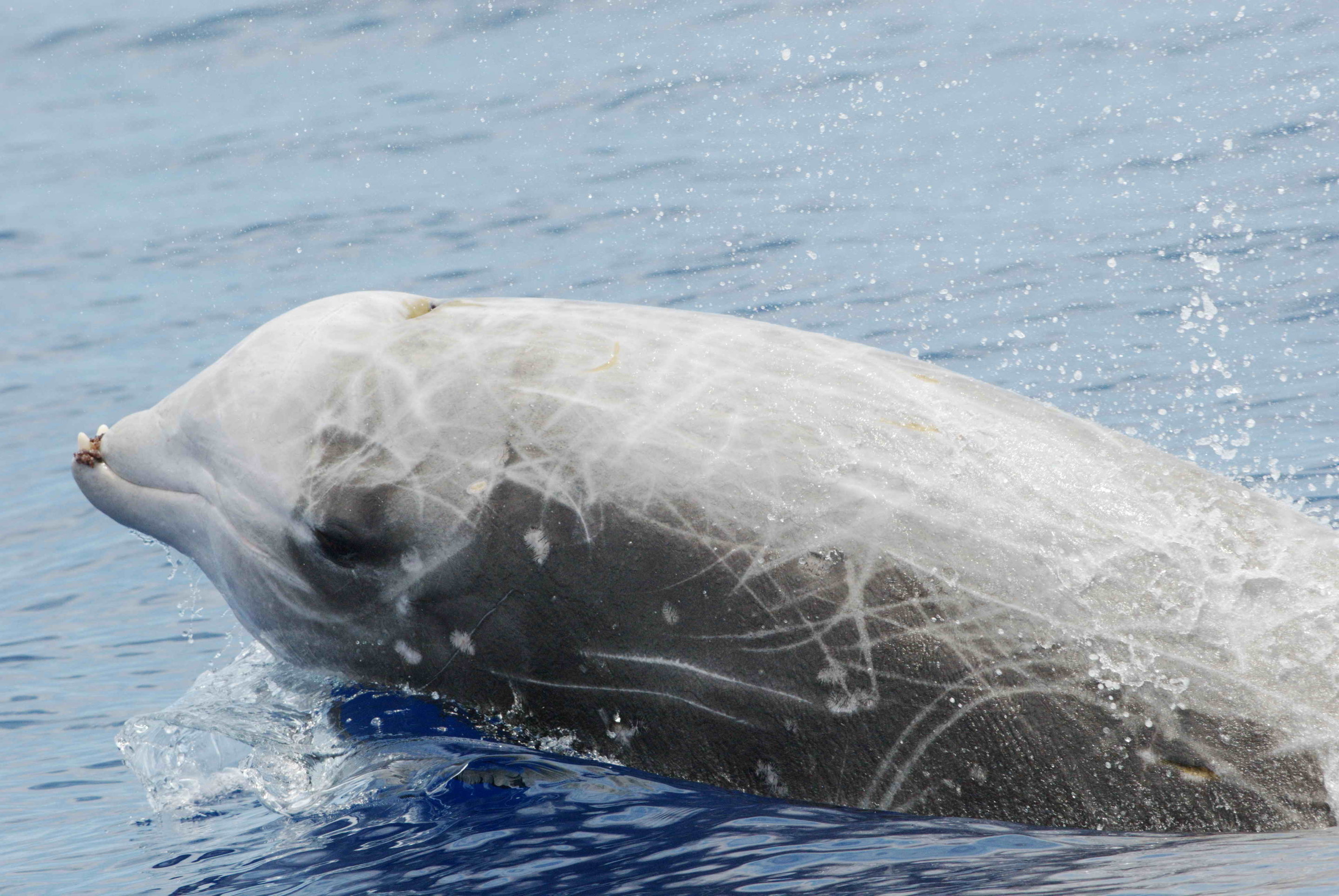Taxonomy and Physical Characteristics

Spade toothed beaked whales – The spade-toothed beaked whale (Mesoplodon traversii) is a member of the order Cetacea, family Ziphiidae, and genus Mesoplodon. It is one of the 23 species of beaked whales, and it is easily recognizable by its distinctive physical characteristics.
Did you know that spade toothed beaked whales have long, narrow beaks that look like shovels? They use these beaks to dig in the mud for food. And speaking of digging, have you heard about Alexis Mac Allister ? He’s a talented footballer who’s been making waves in the Premier League.
But back to spade toothed beaked whales, these incredible creatures are known for their deep dives, reaching depths of up to 2,600 meters.
Spade-toothed beaked whales are medium-sized whales, with males reaching a maximum length of about 16 feet (4.9 meters) and weighing up to 2,200 pounds (1,000 kilograms). Females are slightly smaller, reaching a maximum length of about 13 feet (4 meters) and weighing up to 1,500 pounds (680 kilograms).
Spade-toothed beaked whales, with their impressive underwater hunting skills, remind me of the fierce competition in the entertainment industry. Just like the Emmy nominations 2024 , where actors and shows battle it out for recognition, these whales showcase their remarkable abilities in the depths of the ocean.
The spade-toothed beaked whale has a long, slender body with a small head and a narrow, pointed beak. The back is dark gray to black, while the belly is lighter gray. The dorsal fin is located about two-thirds of the way down the back, and it is small and triangular. The flippers are long and narrow, and the tail flukes are wide and triangular.
One of the most distinctive features of the spade-toothed beaked whale is its teeth. The males have two large, spade-shaped teeth that protrude from the lower jaw. The females have smaller teeth that are not as spade-shaped.
Body Size, Spade toothed beaked whales
Spade-toothed beaked whales are medium-sized whales, with males reaching a maximum length of about 16 feet (4.9 meters) and weighing up to 2,200 pounds (1,000 kilograms). Females are slightly smaller, reaching a maximum length of about 13 feet (4 meters) and weighing up to 1,500 pounds (680 kilograms).
Coloration
The spade-toothed beaked whale has a long, slender body with a small head and a narrow, pointed beak. The back is dark gray to black, while the belly is lighter gray.
Distinctive Features
One of the most distinctive features of the spade-toothed beaked whale is its teeth. The males have two large, spade-shaped teeth that protrude from the lower jaw. The females have smaller teeth that are not as spade-shaped.
Habitat and Distribution
Spade-toothed beaked whales are found in deep, offshore waters of the world’s oceans. They prefer water depths of around 1,000-3,000 meters (3,280-9,840 feet), and they are typically found in areas with a temperature range of 4-12 degrees Celsius (39-54 degrees Fahrenheit). They are most commonly found in the North Atlantic and North Pacific Oceans, but they have also been sighted in the Southern Hemisphere.
Migratory Patterns
Spade-toothed beaked whales are known to migrate seasonally. During the summer months, they move to higher latitudes to feed in areas with a high concentration of prey. During the winter months, they move to lower latitudes to breed and give birth.
Behavior and Communication: Spade Toothed Beaked Whales

Spade-toothed beaked whales are known for their secretive nature and elusive behavior. They are typically shy and avoid contact with humans and other vessels. However, they are highly social animals that live in close-knit groups. These groups usually consist of a few individuals, but they can sometimes form larger aggregations of up to 20 or more whales.
Spade-toothed beaked whales communicate using a variety of vocalizations, including clicks, whistles, and pulsed calls. These sounds are used for echolocation, navigation, and social communication. Echolocation is a process by which the whales emit high-pitched clicks that bounce off objects in their environment. This allows them to create a mental image of their surroundings and locate prey.
Spade-toothed beaked whales are also known for their distinctive mating rituals. During the breeding season, males will compete for the attention of females by performing elaborate displays of strength and agility. These displays include breaching, spy-hopping, and tail-slapping.
Echolocation
Spade-toothed beaked whales use echolocation for a variety of purposes, including navigation, communication, and prey detection. Echolocation involves emitting high-pitched clicks that bounce off objects in the environment. The whales then listen for the echoes to create a mental image of their surroundings.
Echolocation is a highly effective way for spade-toothed beaked whales to navigate in the dark and murky depths of the ocean. It allows them to detect obstacles, find prey, and communicate with each other.
Vocalizations
Spade-toothed beaked whales produce a variety of vocalizations, including clicks, whistles, and pulsed calls. These sounds are used for communication, echolocation, and social bonding.
Clicks are the most common vocalization produced by spade-toothed beaked whales. They are used for echolocation, navigation, and communication. Whistles are typically used for social communication, such as maintaining contact between group members or attracting mates. Pulsed calls are used for long-distance communication, such as attracting mates or defending territory.